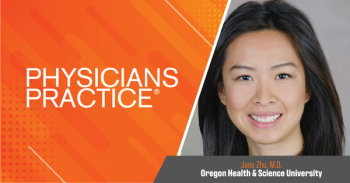Join us Sept. 19 & 20 in Philadelphia at Practice Rx, our new conference for physicians and office administrators to help improve your medical practice and your bottom line.
Five Great Things Physicians Should Know About Physician Assistants
The physician assistant profession is booming due to the unique strengths it brings to the healthcare system and healthcare teams.
I have been in practice as a physician assistant for over 30 years, and I have learned a thing or two about team practice in the delivery of medical care.
I initially became a PA after working as a mobile intensive care paramedic to a PA. I learned to love taking care of people as an EMT and a paramedic, and my family and I didn’t have the resources to consider the lofty goal of medical school. So becoming a PA seemed like an ideal career advancement, especially at the time when shortages of primary-care providers were predicted in all areas of the healthcare system.
Over the four decades that I have practiced as a PA, I have been in six specialties and practice settings, from public health, OB/GYN, occupational medicine, emergency medicine, urgent care, and currently practice in plastic and reconstructive surgery. During a long and productive career as a PA, a number of characteristics of the PA profession have become increasingly evident to me.
The utility of the PA profession is its strength.
We are trained in the medical model and must maintain a generalist knowledge throughout our careers because we recertify every 10 years on that general knowledge no matter what specialty medicine we practice.
Like physicians, we get exposure to most major practice and specialty areas through rotations while training. While more PAs are doing some form of postgraduate training in specialty care, if a physician is willing to train a PA that PA will quickly gain the skills and experience needed to be a valuable team player.
I believe that this flexibility leads to greater job satisfaction for PAs compared to most other physicians and other providers.
PAs practice in every medical specialty.
PAs practice medicine in teams with physicians. They always have and always will. The National Commission on Certification of Physician Assistants (NCCPA) published an
The
PAs practice in every medical setting.
Over 77 percent of PAs practice in either an office-based private practice or a hospital setting. My most recent practice is in a hospital-based plastic and reconstructive surgery practice. In our facility, scores of PAs and NPs work in emergency, on hospitalist teams, and in surgery, and they are well integrated into the teams caring for both inpatients and outpatients.
PAs practice in every community.
When you look at the distribution of PAs geographically on pages three to eight, PAs gravitate toward areas of high population density for the same reasons as physicians . Yet, 37 percent of PAs practice in medically underserved areas, according to the AAPC.
The PA profession is booming because of its value.
According to the NCCPA, there were approximately 43,500 certified PAs at the end of 2003. The profession grew 219 percent over the next 10 years reaching 95,583 certified PAs at the end of 2013. There are now more than 100,000 certified PAs practicing medicine in this country. A truly astounding milestone!
The Accreditation Review Commission on Education for the Physician Assistant (ARC-PA) expects that the number of PA educational programs will grow from 187 today to 250 by 2018. Based on those projections, NCCPA estimates there will be more than 125,000 certified PAs before the end of 2018. For someone who graduated in 1981, when about 10,000 PAs practiced in the U.S., this represents astounding growth of an idea and a relatively new profession.
The demographics of healthcare human resources are changing rapidly due to a number of factors, including the Affordable Care Act. PAs will continue to play an important in the delivery of healthcare in the foreseeable future. All those involved in the healthcare system must understand all the members of their healthcare teams, including PAs, and how they function in enhancing the care delivered by those teams.
This blog was provided in partnership with the American Academy of Physician Assistants.
Newsletter
Optimize your practice with the Physicians Practice newsletter, offering management pearls, leadership tips, and business strategies tailored for practice administrators and physicians of any specialty.









